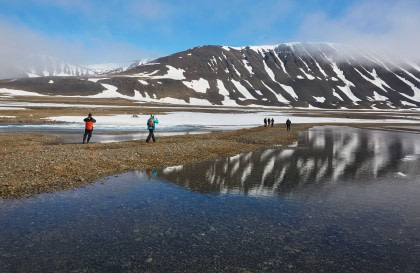Puffins, clown birds of the Atlantic
Puffins belong to a family of 22 species of seabirds called auks, pigeon-sized birds that live on a diet of small fish and crustaceans.
They catch their prey by swimming underwater and chasing it down, not unlike penguins.
There are four species of puffin. One species, the Atlantic puffin, is around 26-29 cm (10.2-11.4 inches) in height and weighs between 320-480 grams (.71-1.06 pounds). It is found across a wide geographic area, all the way from France to the Gulf of Maine.
It is the Atlantic puffin we see on some of our Arctic voyages.
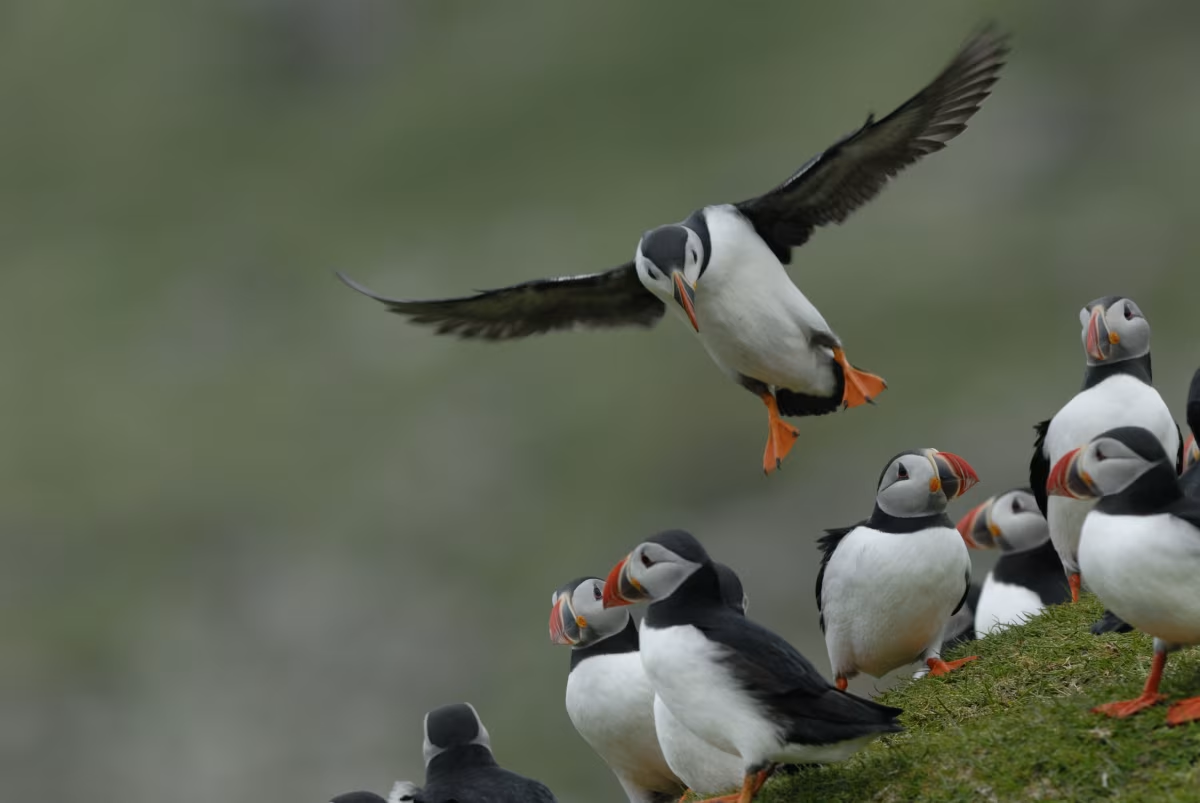
Arctic sea parrots
The Atlantic puffin is commonly called a “sea parrot” because of its bill, which has deep colorful grooves of red, yellow, and blue. During breeding, the bird’s plumage crown, neck, and upperparts are black, while the belly and sides are white.
Meanwhile, the sides of their heads are grey-white and their legs are orange-red. During the winter months, their heads are a darkish grey, while their legs are yellowish. Their bills are paler and smaller, because several layers fall off over the colder months.

Puffins around Svalbard
The Atlantic puffins sometimes seen on Svalbard cruises are slightly larger than birds of the same species in the sub-Arctic (Iceland, the Faroe Islands, Scotland, and Jan Mayen Island). In Svalbard, puffins breed in about 50 colonies dotted along the west coast of Spitsbergen.
Unlike puffins in the sub-Arctic, which breed in large numbers on the top edges of tall cliffs, puffin breeding sites in Svalbard are limited due to permafrost and the lack of soil. This forces the birds to breed on steep cliffs as well as in crevices between boulders. These sites are often also crowded with guillemots and kittiwakes.

The puffins of Greenland
In Greenland, Atlantic puffins have a population of around 5,000 pairs. Around 70 breeding colonies are located along the west coast, between Cape Farewell and Hakluyt Island. Each colony is typically around 400 birds each.
It is rare for the birds to breed on the east coast. Most of the birds breed in earthy burrows. In the colder north, the birds breed in cracks and below stones and boulders, often in close proximity to razorbills.

Sea parrot cuisine
Atlantic puffins eat a variety of food, including small fish, crustacea, squid, and marine worms. Adult birds have been known to bring their young a large variety of fish to eat. One study found that parents brought their chicks more than 50 species of fish.
The most common food these birds bring their young, though, is sandeel, which are small, elongated, silver-colored eel-like fish. However, it is not long before adult puffins force their young to enter the world, with the adult birds providing no further care after their chicks have finished fledging.
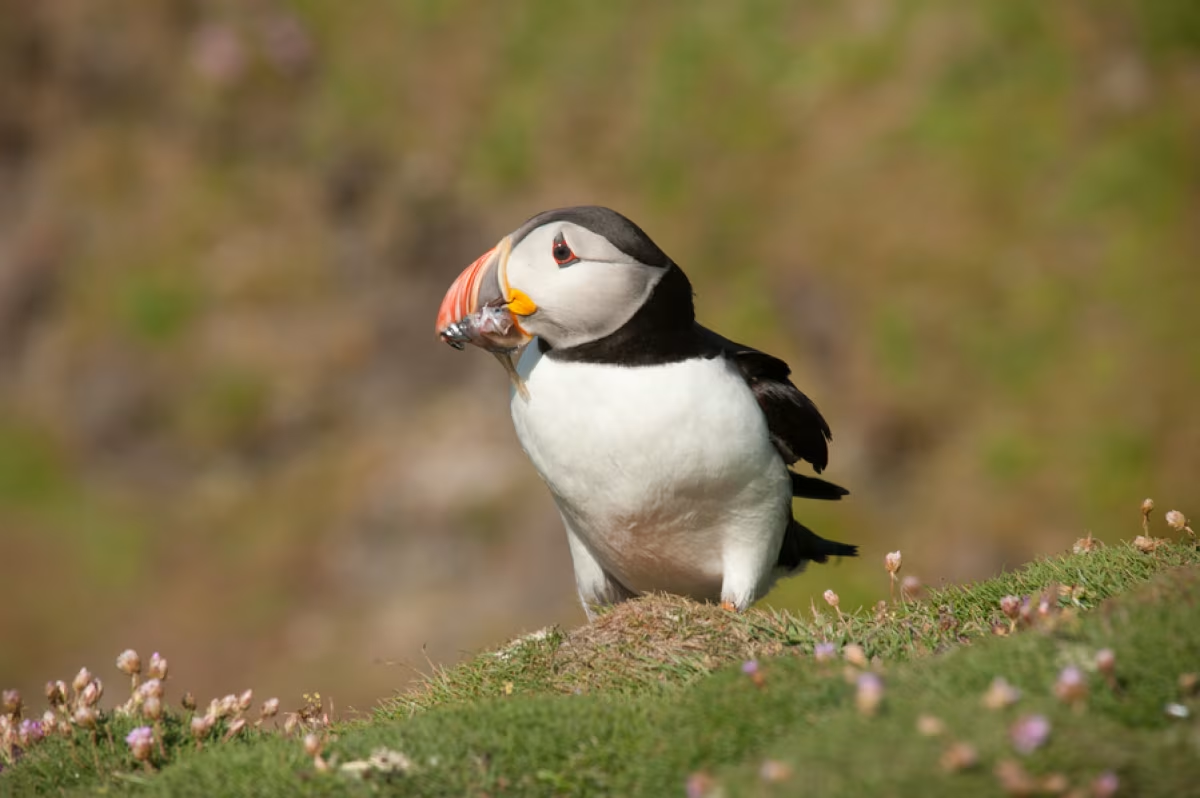
Braving the new world
When the young Atlantic puffin is ready to leave its nest – at this stage, it is a dark-faced, small-billed version of an adult – it does so under the cover of darkness to avoid predatory birds, heading to the cliff-edge. The young bird then makes a leap of faith, half-falling to the sea below before flying into the water.
But while the puffin can instinctively swim, it takes longer for the bird to learn how to dive and fish.
Luckily, because the young puffin was fed well, it has ample fat reserves and can afford to take some time learning these new skills. During this stage, however, the bird is particularly vulnerable to predators: Gulls and skuas are always on the lookout. Nonetheless, the young puffin does find safety out to sea. During the first winter, the subadult puffin will spend its time at sea before heading inland to visit the colony in the summer.
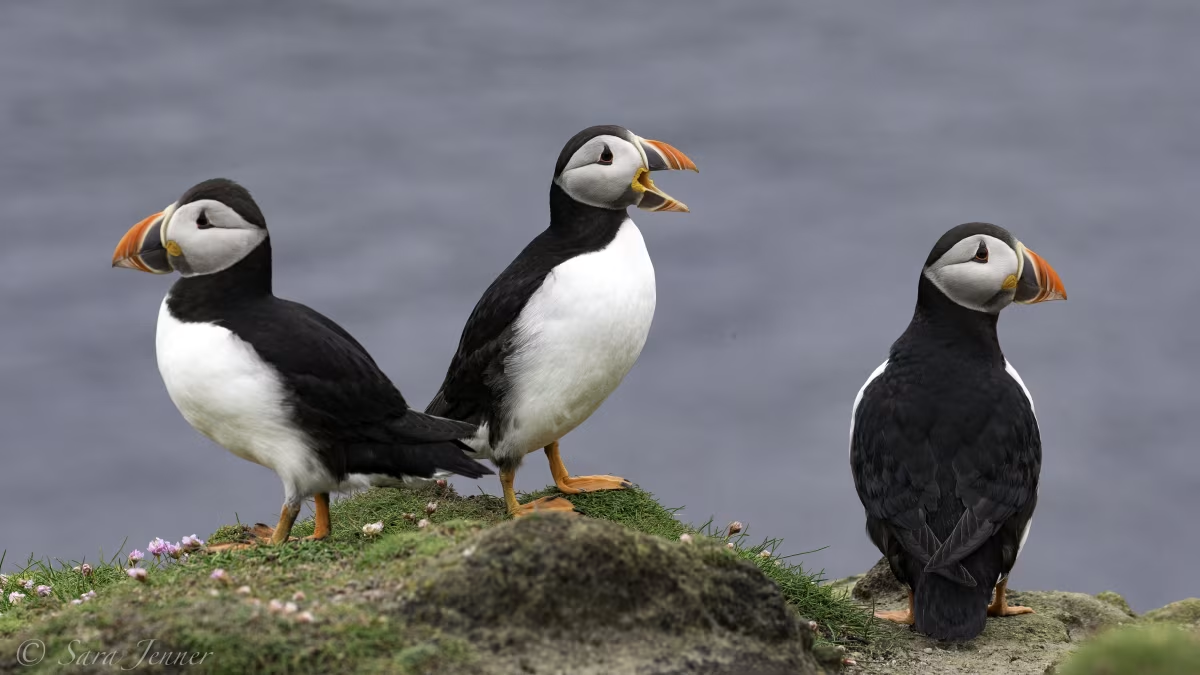
Where the puffin goes
Scientists have been tracking puffins who make their way to the Thule area of Greenland, the northernmost extent of the Atlantic puffin’s breeding range. In this area, a small number of puffin colonies are known, but they are very small: 5-10 birds each. Until recently, the exact population numbers, timing of migration, and wintering locations were unknown.
In 2013, researchers began a large-scale monitoring project at this colony, with the primary objective being to annually census the colony as well as capture, band, and sample as many individuals as possible. Researches also wanted to use geolocators to determine where the birds from this colony winter. In 2014, two geolocators were found with an entire year’s worth of data for one individual and 150 days for the second.
The year-long data of one puffin showed that the bird traveled up and down the west coast of Greenland during migration, but spent the vast majority of the winter in the middle of the Atlantic – over 1,000 km (620 miles) from the nearest landmass.

What puffins do
Many long-lived birds, including Atlantic puffins, are known to have monogamous pairings. Their reproductive performance is also influenced by pair-bonding strength and longevity. This results in long-established pairs having more success in rearing their offspring.
However, scientists know little about how puffins that migrate to distant wintering grounds maintain their pair bonds. For instance, do they part ways and look after themselves during the winter period, or do they stick together?
Researchers recently published a study that focuses on what puffin pairs did over this period. Over six years, researchers from Oxford’s Department of Zoology and the London Institute of Zoology used geolocators to track 12 puffin pairs’ migratory movements and behavior.
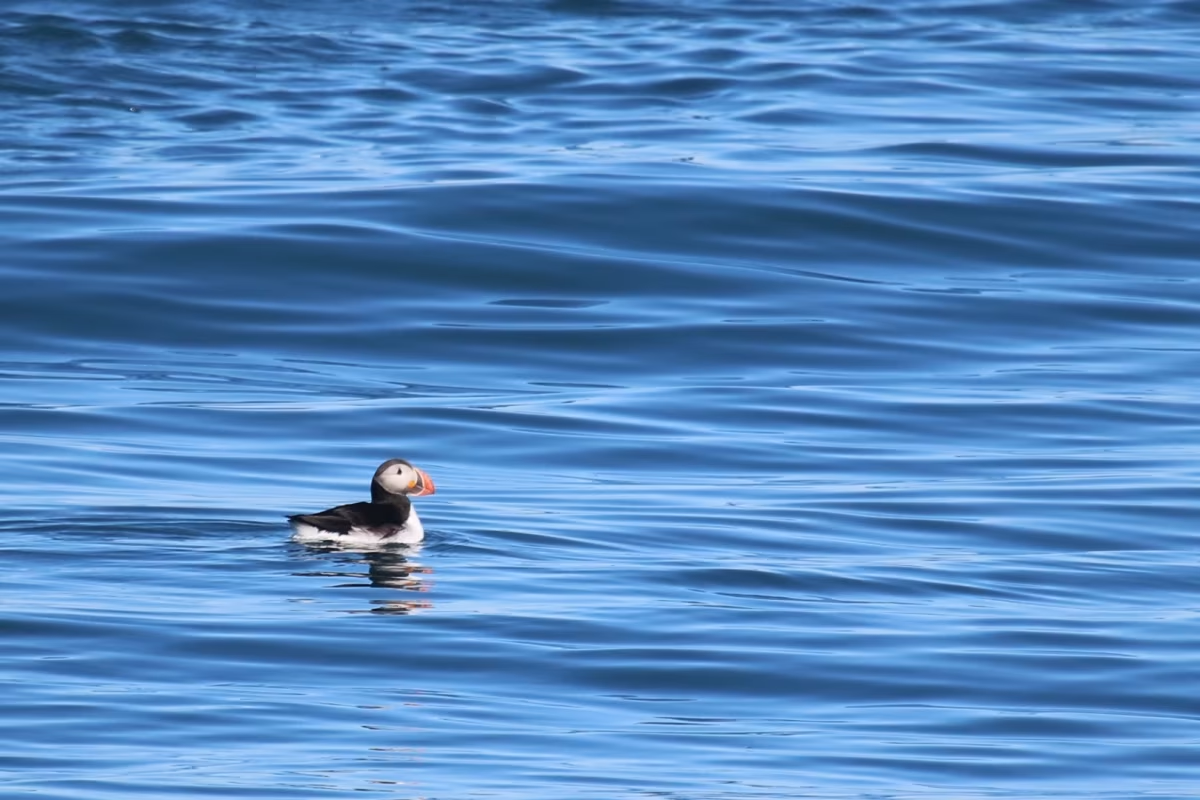
The researchers found that while the birds migrated separately on the way to their wintering grounds, their routes were very similar, enabling them to find each other with ease. On the way back, the partners would follow different paths, but they synchronised the timing of their trip so that they both returned to the colony at the same time in spring.
A key piece of knowledge the scientists found was that pairs that followed a similar migration route bred earlier and more successfully than other birds the following spring. The scientists speculated that the proximity of their return trip may make it easier for pairs to find each other more quickly.
The study also found that females foraged more than males over the winter period. The forage activity was directly related to females’ ability to lay eggs earlier and rear their chicks more successfully, as they were in better pre-breeding shape.
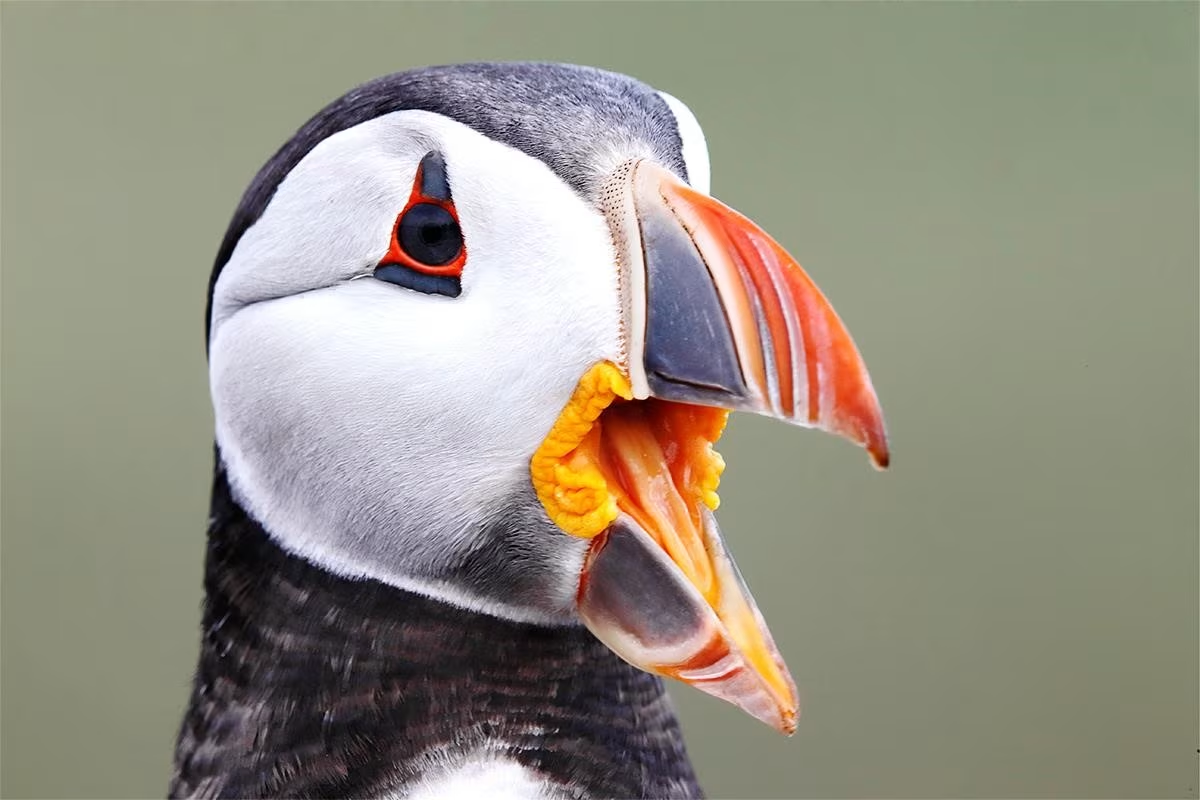
Future puffin research
Scientists hope to be able to study the puffin more in the future, understanding what exactly they do at the end of their breeding season. Researchers want to combine miniature tracking devices with computer programs to identify behaviors in tracking data, enabling them to not only know where puffins go but also what they are doing at sea.
This data will be valuable to conservationists intent on protecting these vibrant seabirds.
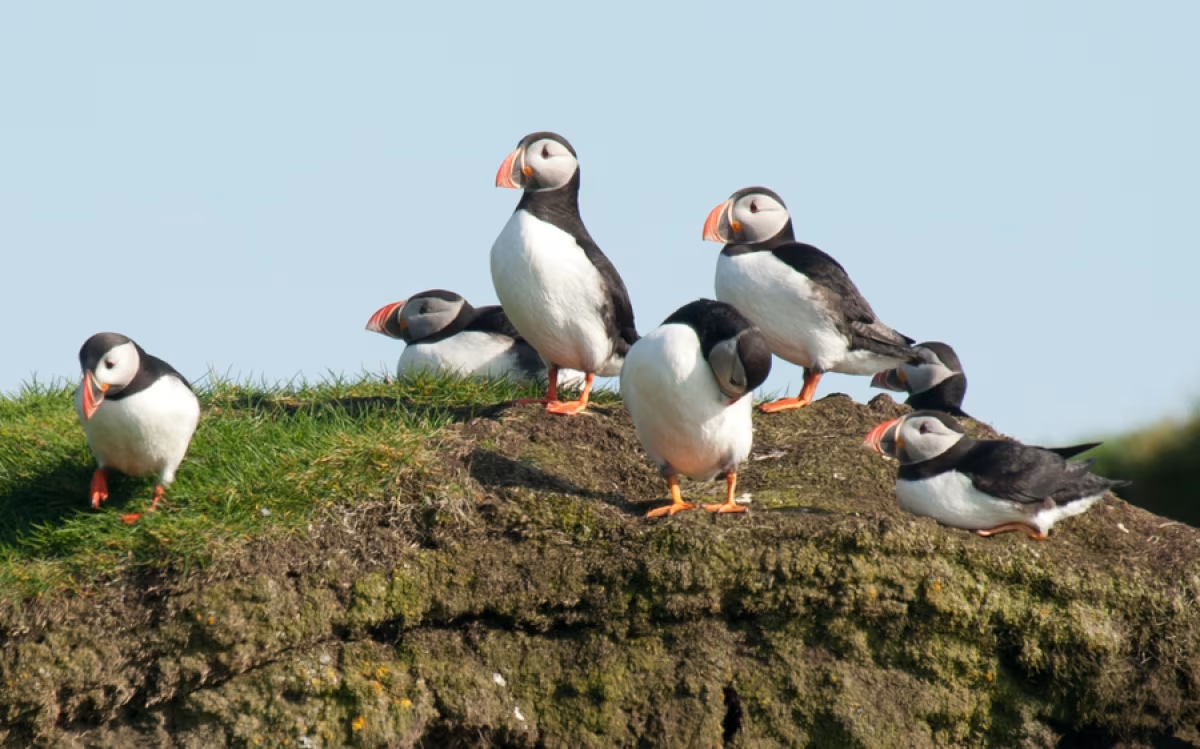
Bonus video on our top 10 puffin facts
In addition to all these great photos and facts about puffins, we also have a brief (but fact-filled) video all about these colorfully beaked seabirds. By the time you're done watching, you'll be fully prepared to see puffins in person on your own Arctic cruise!




